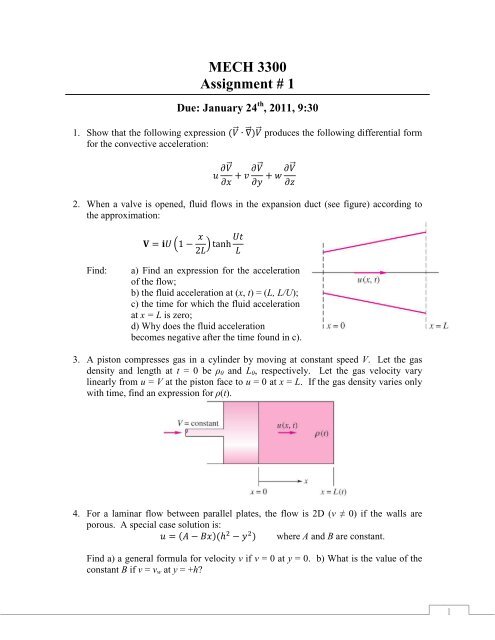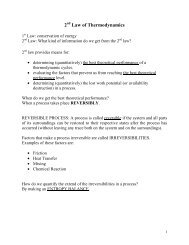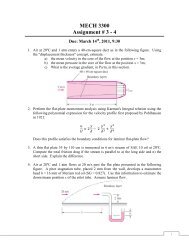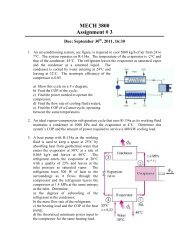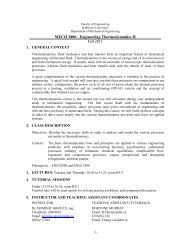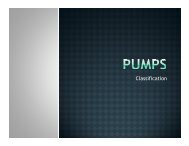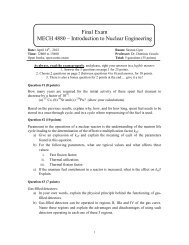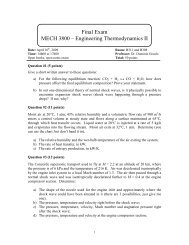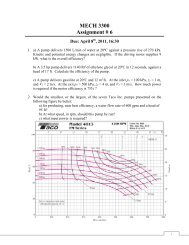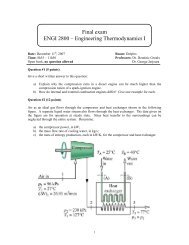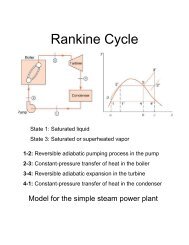MECH 3300 Assignment # 1
MECH 3300 Assignment # 1
MECH 3300 Assignment # 1
You also want an ePaper? Increase the reach of your titles
YUMPU automatically turns print PDFs into web optimized ePapers that Google loves.
<strong>MECH</strong> <strong>3300</strong><br />
<strong>Assignment</strong> # 1<br />
Due: January 24 th , 2011, 9:30<br />
1. Show that the following expression ( ∙ ∇) produces the following differential form<br />
for the convective acceleration:<br />
<br />
+ <br />
+ <br />
<br />
2. When a valve is opened, fluid flows in the expansion duct (see figure) according to<br />
the approximation:<br />
= 1 − <br />
tanh<br />
2 <br />
Find:<br />
a) Find an expression for the acceleration<br />
of the flow;<br />
b) the fluid acceleration at (x, t) = (L, L/U);<br />
c) the time for which the fluid acceleration<br />
at x = L is zero;<br />
d) Why does the fluid acceleration<br />
becomes negative after the time found in c).<br />
3. A piston compresses gas in a cylinder by moving at constant speed V. Let the gas<br />
density and length at t = 0 be ρ 0 and L 0 , respectively. Let the gas velocity vary<br />
linearly from u = V at the piston face to u = 0 at x = L. If the gas density varies only<br />
with time, find an expression for ρ(t).<br />
4. For a laminar flow between parallel plates, the flow is 2D (v ≠ 0) if the walls are<br />
porous. A special case solution is:<br />
= ( − )(h − ) where A and B are constant.<br />
Find a) a general formula for velocity v if v = 0 at y = 0. b) What is the value of the<br />
constant B if v = v w at y = +h<br />
1
5. A frictionless, incompressible steady flow field is given by<br />
= 2 − <br />
in arbitrary units. Let the density be ρ 0 = constant and neglect gravity. Find an<br />
expression for the pressure gradient in the x direction.<br />
6. Consider a steady, 2D, incompressible flow of a newtonian fluid in which the velocity<br />
field is known: u = -2xy, v = y 2 -x 2 , w = 0.<br />
a) Does this flow satisfy conservation of mass;<br />
b) Find the pressure field, p(x,y) if the pressure at the point (x = 0, y = 0) is<br />
equal to p a .<br />
7. From the Navier-Stokes equations for incompressible flow in polar coordinates, find<br />
the most general case of purely circulating motion v θ (r), v r = v z = 0, for flow with no<br />
slip between two fixed concentric cylinders as in the figure.<br />
2


